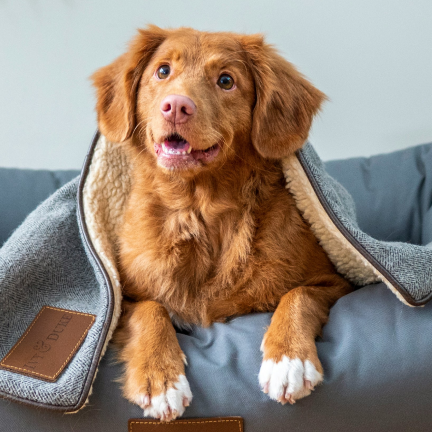Blog:Flying With Your Pet

Flying With Your Pet: A Guide to Health Certificates and Common Questions
If you are planning air travel with your pet, you will need a Health Certificate. Here are some key points to know:
Marina Veterinary Center’s travel experts can help you determine your pet’s travel requirements and assist in filling out all the necessary paperwork.
Our USDA accredited vets can endorse health certificates on the spot.
Keep reading to learn requirements and things to think about for when your pet is flying with you, or flying as cargo.
IF Your Pet is Flying in the Cabin with You:
Check your airline’s size limitations: Most airlines allow pets weighing 15 lbs or less to fly in the cabin with their owners (this weight includes both the pet and the carrier). This also means the carrier must fit under the seat in front of you. Check with the airline about the carrier size and dimensions. Most airlines sell carriers or you can buy one from a pet supply store.
Confirm travel with your airline: Be sure to confirm with the airline the day before travel that your pet is coming with you.
Know Health Certificate requirements: Remember in almost all cases you will need a USDA health certificate. Check with the airline as to how many days before travel the certificate must be issued. The USDA considers a health certificate to be valid for 30 days, but many airlines and states have their own ideas about how long a health certificate should be valid and 10 days is typical for domestic travel. Some states require specific vaccinations. Travel to many foreign countries now requires special notarization of the certificate beyond the veterinarian’s signature and some countries require special blood tests for entry. Always be sure to check with the consulate regarding what you need.
Plan for added stress: Some animals may be stressed or frightened by travel. Consider asking your veterinarian about anxiolytics (medication to reduce or prevent anxiety). If your pet is traveling in the cabin with you, you may just want to have some on hand in case of unexpected anxiety.
Understand service animal requirements: Service animals (animals that have been specifically trained to assist someone with a disability) generally fly for free and do not have to be confined to a carrier but they do have to be leashed or harnessed. Paperwork is necessary to attest to the animal's training and temperament and rabies vaccination must be documented. Emotional support animals are not considered service animals as of December 2020 and are not allowed in the cabin as they have been previously.
Remember, travel is stressful enough without having to worry about how the pet will fare in a carrier surrounded by noise and unfamiliar people. Horror stories abound. Still, most travel disasters stem from one of three issues (all of which are readily preventable):
Do not open the carrier for a final petting or hug before travel as the pet can escape.
Do not use a low-quality carrier that can open or break.
Get your pet used to being inside the carrier prior to travel so as to minimize anxiety. Keep in mind that brachycephalic (short-faced) dog breeds may have difficulty breathing when agitated.
Proper planning makes for a fun excursion for every member of the family, even the furry ones!
IF Your Pet is Flying as Checked Luggage or Manifest Cargo:
What if your pet is too big for cabin travel? You can have your pet travel as checked luggage or as manifest cargo. But what is the difference? In both situations, the pet travels in a pressure and temperature controlled hold. It turns out that cargo is probably a better experience for your pet. In fact, many airlines no longer allow for pets to fly as checked luggage for reasons that will become obvious below.
Checked Luggage
(this option could save you money, but probably not worth the reduced safety)
When your pet flys in checked luggage, here are some important things to note:
Check in happens at the main terminal.
You must accompany your pet on the same flight. If you are not flying yourself, your pet will need to be in cargo. Checked luggage is not an option.
Personnel are generally trained to handle luggage, not live animals.
Charged as a flat fee rather than by weight which usually works out cheaper than cargo.
Transport vehicles moving across tarmac are not required to be temperature controlled. Often these vehicles are open to the air and raw environmental temperature for unspecified time periods
Manifest Cargo
When your pet flys in manifest cargo, here are some important things to note:
Check in happens at cargo entrance.
Personnel are trained to handle live animals and their enclosures.
Generally more expensive and charged by weight.
Transport vehicles are temperature controlled and protected from the environment.
Regardless of whether you choose cargo or checked luggage, each airline will have additional requirements and you will need to check with the specific airline to get most of these.
Additional Requirements and Things to Consider When Traveling with a Pet:
Weight requirements - some airlines have maximum weight requirements. Be sure to check for any restrictions. Most states will not accept animals younger than 8 weeks of age. Such youngsters will not be allowed to travel by air. As of December 2020, airlines may not prohibit transport based on breed per se but they may have safety restrictions as for brachycephalic breeds.
Guidelines for animal shipping are set by the International Air Travel Association (IATA). These include the size of the shipping container, how it must be marked, how it is ventilated and how food and water should be made available. Read the guidelines.
Tracking your pet’s travel - consider implanting a microchip for any pet who travels.
Temperature regulation - According to the Animal Welfare Act, there are specific temperature guidelines to which airlines must adhere. Ambient temperatures in holding areas for cats and dogs must not fall below 45⁰F for more than 45 minutes when being moved to or from a holding area. Animals transported in a carry-on are not protected under the Animal Welfare Act, so it is up to the person carrying them to see that they do not become too cold or overheated.
At the present time, Delta Airlines and United Airlines no longer accept animals as checked luggage. They must fly as cargo or in the cabin (if appropriate requirements for in-cabin travel are met). However, every airline has its own rules about pet travel, so check with your airline before you book tickets.
Schedule an Appointment
In need of a health certificate for an upcoming trip? You can journey confidently with your pet, entrusting Marina Veterinary Center with their health certification needs. Click here or call (310) 642-8080 to schedule an appointment.
More Helpful Links and Information
For Airline Requirements for Pet Travel By Airline
The USDA Regulations for Bringing a Pet to Another State or to a Foreign Country
The AVMA Guidelines on travel with short-faced breeds
International Pet and Animal Transportation Association can help you find a pet relocation service.
For further Air Travel Tips including a guide to In-terminal Pet Relief Stations:



